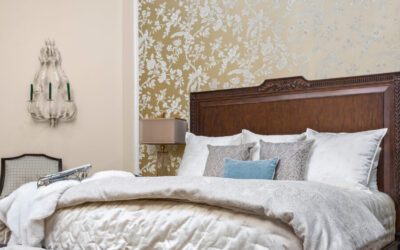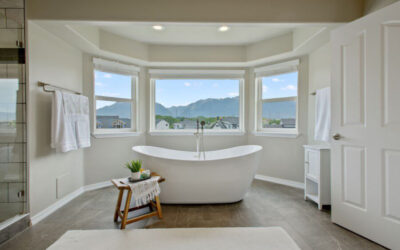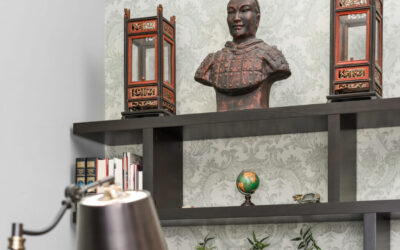Introduction:
Decorating a space is a creative and exciting endeavor, but it can also be challenging. Whether you’re revamping your home or designing a new space, it’s important to be aware of common decorating mistakes that can hinder your efforts. In this article, we will discuss 15 common decorating mistakes and provide valuable tips on how to avoid them. By steering clear of these pitfalls, you can achieve stunning interior decoration that reflects your personal style and enhances the overall ambiance of your space.
Lack of Planning:
One of the biggest mistakes people make when decorating is diving right in without a plan. Take the time to envision your ideal space, consider your needs, and set a budget. Create a mood board or sketch out a layout to help guide your design decisions.
Ignoring Natural Light:
Underestimating the importance of natural light can negatively impact the ambiance of a room. Avoid covering windows with heavy drapes or furniture that obstructs light. Instead, embrace natural light by using sheer curtains or blinds to maximize its presence, creating an inviting and bright atmosphere.
Poor Furniture Placement:
Improper furniture placement can disrupt the flow and functionality of a room. Avoid overcrowding by ensuring there’s enough space to move comfortably. Consider the room’s focal point and arrange furniture accordingly. Experiment with different layouts before settling on the final arrangement.
Mismatched Scale:
Choosing furniture and accessories that are disproportionate to the room’s size can make the space feel awkward and unbalanced. Be mindful of scale when selecting pieces and aim for a harmonious relationship between the room’s dimensions and the items you introduce.
Neglecting Texture and Layering:
A common decorating mistake is overlooking the importance of texture and layering. Texture adds depth and visual interest to a room, while layering helps create a cozy and inviting atmosphere. Incorporate different textures through textiles, rugs, and accessories, and layer them thoughtfully for a more visually appealing space.
Poor Color Choices:
Selecting the wrong colors for a room can completely alter its mood and energy. Avoid overwhelming or clashing color schemes by using a color wheel to identify complementary or analogous hues. Consider the purpose of the room and the emotions you want to evoke when choosing colors.
Overlooking Lighting:
Inadequate lighting can make a beautifully decorated room appear dull and uninviting. Incorporate a variety of lighting sources, including ambient, task, and accent lighting, to create a layered and balanced illumination. Utilize a mix of overhead fixtures, table lamps, and floor lamps to achieve the desired effect.
Neglecting the Fifth Wall:
The ceiling is often referred to as the “fifth wall” and is an essential element in interior decoration. Avoid leaving it plain and boring. Consider using a bold paint color, textured wallpaper, or decorative molding to add visual interest and enhance the overall design.
Disorganized Storage:
A cluttered and disorganized space can detract from even the most well-designed interiors. Invest in functional storage solutions such as cabinets, shelves, and baskets to keep belongings neatly tucked away. Implement organization systems that suit your needs to maintain a tidy and visually pleasing environment.
Over accessorizing:
While accessories can add personality and charm to a space, over accessorizing can create visual clutter. Avoid crowding surfaces with too many knick-knacks or decorative items. Select a few statement pieces that complement the overall design and allow them to shine.
Lack of Balance:
Achieving balance in a room is crucial for a harmonious and visually pleasing aesthetic while decorating. Avoid placing all the furniture and accessories on one side of the room. Distribute elements evenly throughout the space, considering both visual and physical balance.
Ignoring the Room’s Architecture:
Neglecting the architectural features of a room is a missed opportunity for enhancing its overall design. Highlight architectural elements such as moldings, columns, or unique window shapes by using appropriate paint colors, lighting, or decorative treatments to draw attention to these features.
Ignoring Functionality:
Aesthetics are essential, but functionality should never be compromised. Consider the purpose of each room and how it will be used. Choose furniture and decor that not only looks appealing but also serves the intended function, ensuring a practical and comfortable space.
Lack of Personal Touch:
A space that lacks a personal touch can feel cold and impersonal. Inject your personality and style into the design by displaying meaningful artwork, photographs, or cherished items. Incorporate elements that reflect your interests and make the space uniquely yours.
Rushing the Process:
One of the most common mistakes is rushing the decorating process. Creating a well-designed space takes time and patience. Avoid hasty decisions by researching, gathering inspiration, and taking your time to curate the perfect elements that will bring your vision to life.
Conclusion:
Decorating a space is an opportunity to express your creativity and create a harmonious environment that suits your style and needs. By avoiding these 15 common decorating mistakes, you can achieve stunning interior decoration that reflects your personality and enhances the overall ambiance of your space. Remember to plan meticulously, embrace natural light, consider scale and balance, and prioritize functionality and personal touches. With careful attention to detail and a thoughtful approach, you’ll create a beautifully decorated space that you can be proud of for years to come.

Interior design is the art of arranging the environment, usually within a home, to create a beautiful and functional space. It encompasses many different fields, including architecture, decorating, and furniture design.
Some of the main benefits of interior design include:
-You can make your home feel more comfortable and inviting by choosing the right furniture and decorations.
-You can use interior design to make your home look more stylish or modern. Get Yourself an Expert
-Interior design can help you save money on things like plumbing and electrical work because you’ll be able to hire professionals who know what they’re doing instead of doing it yourself. Get Yourself an Expert
-It’s an excellent way to improve your home’s value if you ever decide to sell it in the future. Get Yourself an Expert






0 Comments